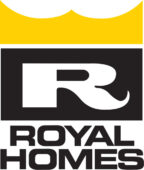Many Canadians look forward to the beginning of October because it means Thanksgiving is just around the corner. However, if you are a cottage owner, this can also be a wistful time because it means the cottage season is now officially over.
While some cottages are suitable for use throughout the year, others must be prepared for the cold weather. Just as there are particular steps when opening a cottage in the springtime, you need to follow a detailed routine when getting one ready for the winter.
Plumbing/Septic Tank/Sump Pump
Cottages not designed for use during the winter months usually include pipes that will freeze during the colder months. It is imperative to drain all the water out because it freezes and expands, causing the pipes to burst. Purchase a non-toxic anti-freeze designed for indoor pipes as an extra precaution to prevent unpleasant surprises. Ensure your water supply is off, and check to ensure you have drained all the water from sinks, toilets, and toilet tanks.
If you have not had an inspection lately, it is advisable to have a professional check your septic tank for any problems. Septic tank closing instructions can vary from model to model, so follow the directions provided by the manufacturer.
Your sump pump should remain on during the winter to help prevent flooding.
Electricity and Appliances
Unless you are planning to use a timer for your lights, keep a security system active, or run a sump pump, you should shut down your electricity. Make sure all appliances are off and stop power using the master switch.
If you do wish to leave some power on, make sure to unplug everything you won’t need. You can selectively turn off the various parts of the cottage’s electricity using the appropriate switches in your fuse box. If you use gas, make sure it is also off.
Structure and Property
Inspect the cottage from the roof on downwards and repair any areas that could leak or give way under the weight of accumulated snow. Some areas have companies that will regularly inspect both your cottage and property for anything unusual. They may also perform some basic maintenance, like removing excessive amounts of snow from the roof as a preventative measure. Cottage owners in areas with heavy snowfall sometimes also invest in temporary structural supports to shore up the roof.

Replace any missing or broken shingles, and make sure your eavestroughs are clean and free of obstructions to prevent water build-up and possible leaks. Also, check for cracks or other spots where animals could gain entry. Ensure you have not left any food behind, because it provides an extra enticement for wildlife to try to take up residence. Remove any flammable substances and clean up any other materials that could easily ignite, such as piles of newspapers.
Store things normally found on your property, such as lawn furniture, BBQs, and water vehicles, in a secure, dry building so they will not rust or go missing.
